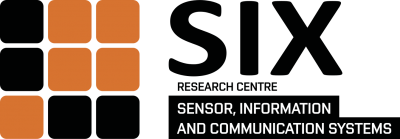Prof. Stanislav Hanus (head)
Prof. Aleš Prokeš (vice-head)
Vision and mission:
The Programme of Wireless Technologies follows up on the basics established in the programme of micro-wave technologies. The programme examines systemic problems of wireless communication, addresses problems of protocols, and relations to information systems. The programme investigates novel circuitry for the processing of signals in the intermediate frequency band.
Areas of expertise:
Wireless optical communication
We have extensive experience in testing of qualitative parameters of links and evaluation of statistical parameters of the atmosphere. We are able to measure the most important characteristics of a wireless optical link – e.g. the power spectral characteristics of optical sources and optical receivers, parameters of optical fibres and distribution of optical intensity of optical fibre output, or bit error ratio in rates up to 11 Gb/s.
Wireless mobile networks
We have done several measurement campaigns for quality of mobile networks. We can analyze the networks in search for problematic network spots, measure the interference between different networks or measure the throughput of networks.
Digital radio and TV broadcasting
We are equipped and qualified in measurement and analysis of transmission in the DVB systems (DVB-S/C/T/H/SH/S2/C2/T2) as well as in IPTV, 3DTV and digital radio broadcasting (DAB/DAB+/DMB). We can test a setup for availability and quality of picture and sound or measure signal coverage and interferences. We have experience in monitoring and optimization of SFN networks as well as testing receivers, tuners and set top boxes.
Radio communication systems
We are experienced in design of microwave radio relay channels, development and realization of modems for remote communication. We know how to design, model and test a radio communication system and its components. Research in this area includes among others frequency synthesizers, two-dimensional signal spreading, estimation of channel parameters, optimization of OFDM systems and adaptive modulation with FEC based on turbo codes.
Simulation and modeling of electronic circuits
Apart from the standard modeling of electronic circuits, we are experienced in modeling of mixed systems in the VHDL-AMS language. We also analyze the parasitic effects in nonlinear dynamical systems (chaos) and design multifunctional electronic filters and oscillators.
High-speed communication systems
Using the state-of-the art equipment, we can analyze high frequency circuits up to 20 GHz, analyze and optimize high-speed serial links up to a bit rate of 16 Gb/s. We can test devices for compliance with USB 3.0, HDMI, SATA and other communication standards.
Design and implementation of special devices
Based on the application requirement, we will design an apparatus concept, its schematic, printed circuit board, provide manufacturing documentation and test the resulting product for functionality, parameters and EMC. We have experience also in applications using FPGA circuits.
Application of multi-processor systems
On top of implementation of different algorithms into microprocessor platforms, we have expertise in development of algorithms for multi-core architectures, optimization of source codes with respect to computation severity and memory demands. Such techniques are then used for design and optimization of communication protocols conscious of bit rate, reliability and consumption and also cognitive access to the transmission medium.
Design techniques
The predominant design tools include Eagle and Altium Designer for PCB design; Xiling, Altera, VHDL and Verilog tools for design of FPGA circuit configurations and the very wide spread Atmel AVR, ARM and x51 architectures in the microprocessor-based designs.

